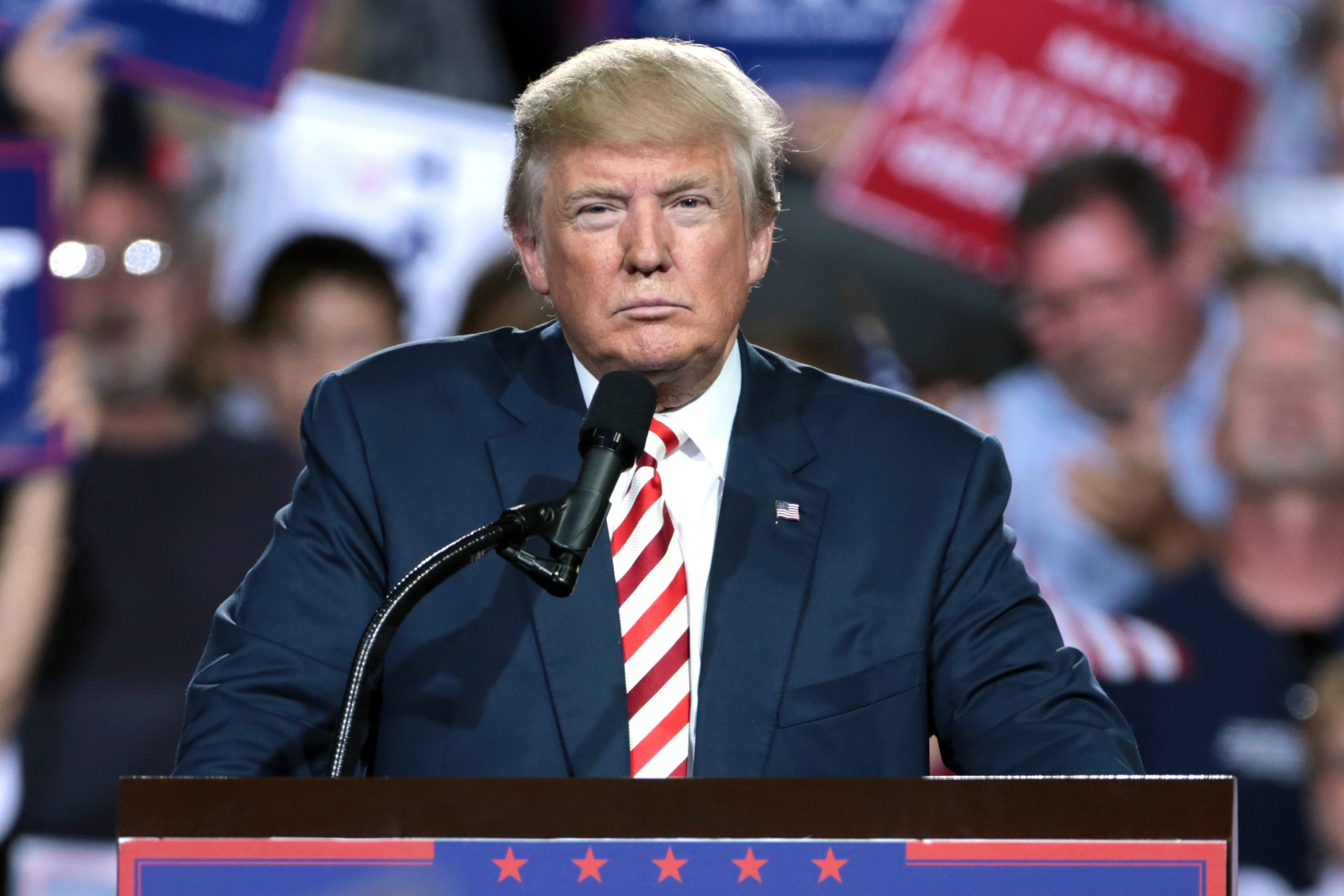With his reckless imposition of import tariffs, President Trump has set in motion a nightmare scenario of tit-for-tat trade wars that the world has not witnessed for generations.
On March 2nd, Trump suddenly announced a general (i.e. non- discriminatory) punitive tariff of 25% on steel imports and 10% on aluminium imports based on section 232 of the 1962 US Trade Expansion Act. The asserted rationale – that the imports posed a threat to national security – is one of the bluntest and most-rarely used arguments amongst WTO partners.
Worldwide, in Europe but also in the US, the sudden announcement by President Trump provoked a storm of protest and led to immediate calls of retaliation by leading trading partners, including Canada (leading exporter to the US for both steel and aluminium), the EU and China, if not many more. Who in the WTO ever expected to fall back into the drama and destructive scenarios of previous trade wars? The spectre of trade wars was something to be studied in economic history books – with harsh but clear lessons to avoid them at all costs – and in the field of simplistic tariff war analysis, yielding equally convincing negative results for all players and an overall shrinkage of trade flows. And, as if this is not bad enough, the impulsive nature of Trump’s decision conveys a powerful signal of uncertainty, which cannot be interpreted in any other way than as undermining a rules-based system. Indeed, choosing national security as the rationale for these tariffs for all foreign suppliers breaks a taboo that has so far restrained all WTO partners from employing outright mercantilist measures, because there is no ‘objective’ way to assess at the multilateral level what is and what is not a particular country’s national security. Moreover, there are other tools available and indeed already employed extensively (if perhaps not excessively) by the US.
Simply observing that China is no longer a principal steel supplier to the US begs the question: why? The answer is simple: China already suffers from a battery of other measures curtailing or stopping its steel exports to the US, with anti-dumping duties going beyond 100% or even 200%, occasionally topped up by countervailing [anti-subsidy] duties of similar magnitudes. Safeguard measures have also been employed. It is bizarre to impose a 25% tariff on all suppliers, as it cannot possibly result in much of a further constraint of Chinese steel exports to the US, whereas it is bound to hit many other suppliers which are, as a rule, not the source of excessively low prices or dumping. Yet, the countries of these suppliers are pushed, inevitably although reluctantly, to engage in a game of tit-for-tat.
The economics of such trade wars is depressively dismal. First, there is the strong likelihood that, insofar as any steel jobs might be ‘created’ in the US, the indirect effects of job losses for steel-using sectors such as cars, construction, etc., or canning and airplanes for aluminium, are larger. 1 In other words, in being futile, these tariffs are also bad domestic policy. And this is (naively) assuming that no retaliation will be launched. Second, the retaliation will typically be selective, inflicting economic pain on specific regions2 and sectors. Third, the uncertainty resulting from this extreme form of plain protectionism will have a chilling effect on trade and investment, and even more so on ongoing or planned trade negotiations with the US.
The potential damage to EU steel exports to the US is likely to be considerable. But there is a secondary, presumably even larger effect: other steel suppliers in the world will seek market outlets for the now (artificially uncompetitive) exports to the US, and one big market they are probably targeting is the EU market. This deflection of trade might take place at reduced prices as so to find buyers in Europe that are now being supplied by others. The Commission and EU member states with relatively large steel output are already calling for the employment of ‘safeguard measures’, which consist of a WTO-based curtailing of imports in the event that a country is suddenly flooded with specific imports that cause or threaten to cause injury.
It is, of course, still early days but it is good to discern the pattern to be expected. The punitive US tariffs applying to all suppliers foreign to the US not only causes many (if not all) of them to go for tit-for-tat, a dangerous development, but also to seek other market outlets all of a sudden, giving rise to safeguard measures by the EU but probably also elsewhere. Although so far only applying to steel, 3 the retaliation will undoubtedly spread restrictions to other product sectors and there is a risk – not least, given Trump’s mind set and zero-sum conception of trade – that this will prompt yet another round of tariff hikes on different products. On March 3rd , Trump threatened the EU with a new tax (tariff presumably) on cars, if the EU were to retaliate against the steel measures. Although it is not clear what WTO-compatible measure can be employed by Trump to do so, the flimsy nature of the rationalisation of the steel measures goes to show that he might be ready to violate WTO rules in a tit-for-tat logic. These types of scenarios remind us of the early 1930s when endless autonomous tariff increases and retaliation led to a steady and draconian shrinkage of world trade.
What is so risky about this ‘strategy’ is the capricious and irresponsible ‘rationalisation’ of the move. In the just published US 2018 Trade Policy Agenda, 4 there is a section called “Trade policy that supports National Security Policy”, which does not deal with action under section 232. This is curious omission, but in a later section on “Enforcing and defending US trade laws” (item 4), the steel and aluminium issue is dealt with. It is mentioned that the US Department of Commerce report of January 2018 (still unpublished) “found that these imports threaten to impair the national security”. The evidence mentioned here is normally the type of data solely used for ordinary safeguard measures or possibly for other trade defence cases. It recalls that employment in steel has dropped 38% since 1998 (this is likely to have several structural reasons, including competitiveness, [labour-saving] technological progress, shifts in demand given e.g. other materials employed in cars, etc., but no details are mentioned. Moreover, safeguards are meant to be applied to sudden inflows of imports, making it hard to adjust in the short run – two decades is anything but sudden). For aluminium, jobs declined by no less than 58% in the period 2013-16, and only five smelters remain (here the issue of energy costs for primary aluminium is critical but no detail is offered, nor is there any mention of the far cheaper recycling of scrap aluminium, which yields perfect substitutes). There is no explanation of the relationship between the two products in question and national security, for example, what minimum supply ‘should be’ from US sources in order not to impair national security, or, for that matter, with quite a few foreign suppliers – most of them traditional allies – what risk of a supply-stop or monopolistic pricing might realistically be run? Nor is there any mention of existing trade defence measures taken over (say) the last five years or so and the tariff levels now applicable to (selective) foreign suppliers.
The mind-set behind these announcements is narrow-minded protectionism with perhaps a few jobs won at the expense of many others that are presumably less interesting for Trump supporters. Unfortunately, however, it stretches much further. Secretary Ross would seem to have suggested, according to press reports, a “positive domino effect” [sic!] in the world resulting from their measures. The twisted reasoning is that all important steel trading countries should take safeguard measures (now that the US has taken action), thereby closing these markets, with China as the ultimate victim getting stuck with its massive overcapacity. Ross even went so far as to call it a “global solution to the problem” and dared to claim that the US was stepping into “that leadership role” by initiating these special safeguard tariffs. As noted above, the collateral damage inflicted on trade and the economy by such a view is huge and also largely unpredictable. As AMCHAM-Europe has stated (and the OECD steel committee has been working on), Chinese overcapacity “requires coordinated action by the EU and US”. Unilateral US action does not address Chinese overcapacity and risks harming America’s relationship with Europe, its staunchest ally.
Ever since Trump came to power, the EU has wisely taken the view that global leadership in trade and investment is to be pursued by leading traders such as the EU itself and China,5 and possibly joined by the remaining 11 signatories of the Trans-Pacific Partnership (TPP) and some others. What has now changed is that we can no longer ignore the protectionist and impulsive nature of the new US trade policy. EU leadership for responsible globalisation will have to be combined with a firm determination to oppose and contain Trump’s protectionist inclinations.


